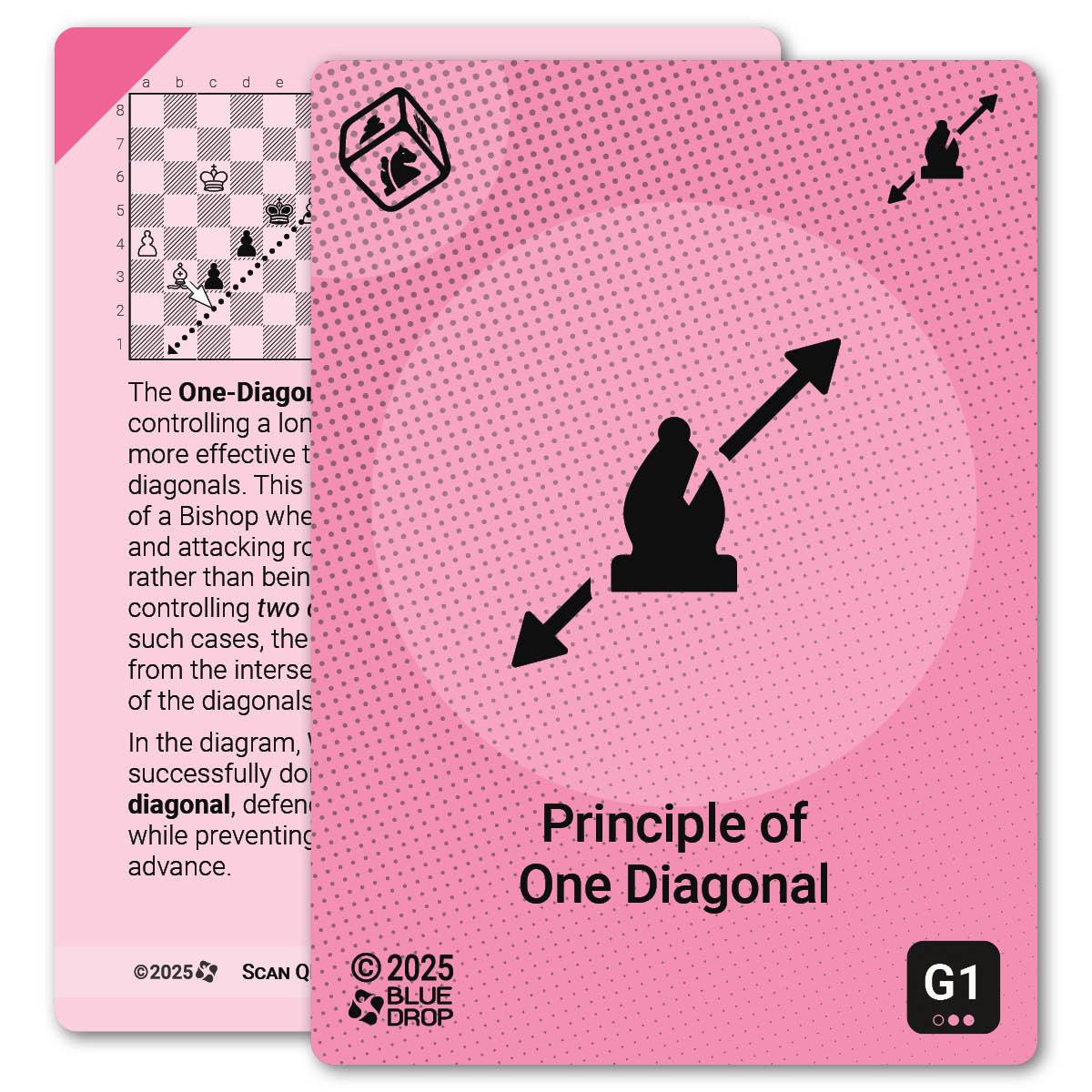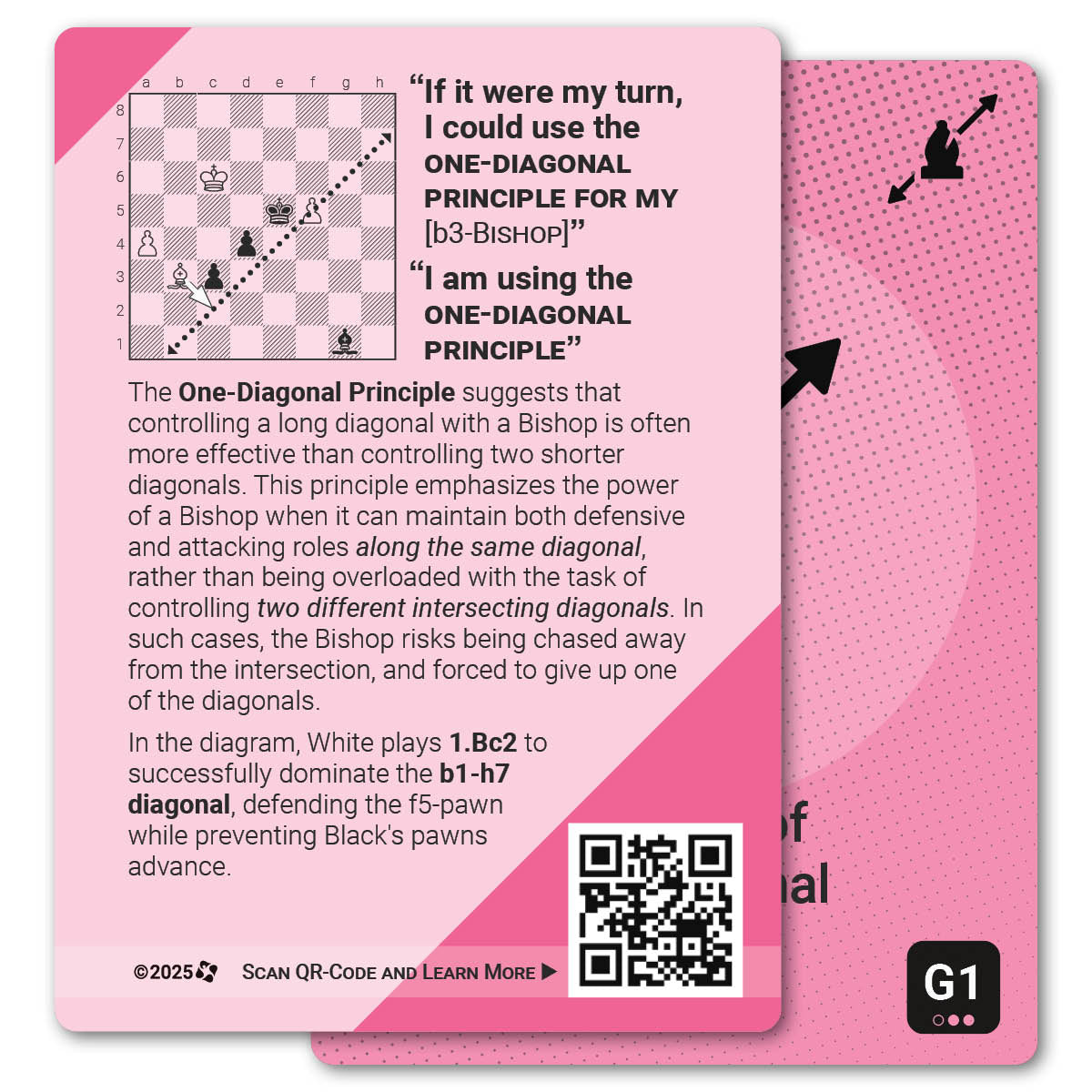Chess Patterns ❯ Knight and Bishop Techniques ❯ Principle of One Diagonal
Principle of One Diagonal
Principle of One Diagonal
The One-Diagonal Principle suggests that controlling a long diagonal with a Bishop is often more effective than controlling two shorter diagonals. This principle emphasizes the power of a Bishop when it can maintain both defensive and attacking roles along the same diagonal, rather than being overloaded with the task of controlling two different intersecting diagonals. In such cases, the Bishop risks being chased away from the intersection, and forced to give up one of the diagonals. In the diagram above, White plays 1.Bc2 to successfully dominate the b1-h7 diagonal, defending the f5-pawn while preventing Black's pawns advance.
Designed with Love in Italy
Designed with Love in Italy
These chess icons are our indie studio's tribute to chess lovers around the world. A way of making chess more visual and fun. You can use the icons for free in publicly accessible content, simply by crediting us (see our Licensing Policy). Each icon is paired with examples and numbered insights to help you pick up ideas quickly and talk about chess with confidence. You can get the cards here.


Master the Principle of One Diagonal
When we started adding a playful touch to chess learning, we looked through thousands of videos and hundreds of books to find the best resources out there. Here's our curated selection of the best content we encountered on the Principle of One Diagonal. We also included some smaller creators who are growing fast and we believe deserve your attention. Check out these resources if you want to master this powerful technique.
-
 WATCH ON YOUTUBE
WATCH ON YOUTUBEDvoretsky's six principles of opposite color bishop endgames
This video by Coach Robert is an excellent introduction to the one-diagonal principle as per the famous Dvoretsky’s masterpiece. Have a go at it.
-
 WATCH ON YOUTUBE
WATCH ON YOUTUBEWatch this fun YouTube short in which James Canty III promptly recalls, explains, and applies the “one Bishop stops all three pawns” idea.
-
 WATCH ON CHESS.COM
WATCH ON CHESS.COMOpposite Colored Bishop Endgames: The Principle of the One Diagonal*
This lesson by GM Bojkov is part of a wider Chess.com series on Opposite Colored Bishop Endgames. Excellent material for intermediate and expert players. At the end, train on the One-Diagonal Principle challenges.
-
 GET IT ON AMAZON
GET IT ON AMAZONThis book by world experts Müller, Lamprecht, John Nunn is subtitled "The Endgame Encyclopaedia for the 21st Century" for good reason. It is comprehensive and thorough. Ideal for serious intermediates and expert players alike.
-
 GET IT ON AMAZON
GET IT ON AMAZONThis book by the legendary Mark Dvoretsky is *THE* definitive guide to endgames. You could spend years studying it. The principle of one diagonal is included. It’s an absolute must-have for your library!























